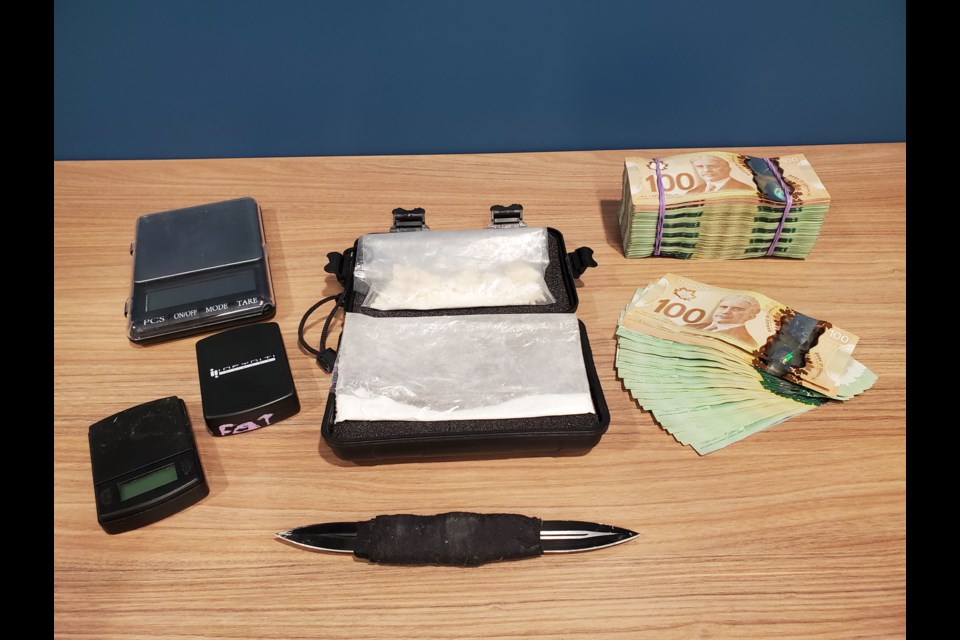EDITOR'S NOTE: A version of this article originally appeared on SooToday on April 23. It is being republished here for readers who may have missed the story.
An Indigenous police service on Manitoulin Island has established its first-ever drug enforcement unit in an effort to combat a proliferation of drug trafficking and organized crime.
This week, the United Chiefs and Councils of Manitoulin (UCCM) Anishnaabe Police announced the launch of the dedicated unit, which was made possible in June of last year when the federal government lifted its discriminatory restriction barring Indigenous police services from creating their own specialized units.
UCCM Anishnaabe Police Chief James Killeen says the creation of a dedicated drug enforcement unit was informed by a number of consultations with community members in the six First Nations served by the police service: Aundeck Omni Kaning First Nation, Whitefish River First Nation, M'Chigeeng First Nation, Sheshegwaning First Nation, Sheguiandah First Nation and Zhiibaahaasing First Nation.
“It was overwhelming — one of the biggest concerns they had was the massive amount of drug trafficking that’s going on,” said Killeen. “On Manitoulin Island, we have a huge amount of opioid overdose deaths. We have a massive amount of gang migration that’s coming to the area.”
Since 2021, drug enforcement investigations carried out by the First Nations police service have resulted in 85 people being charged with more than 363 criminal and drug offences, in addition to the seizure of illegal and prescription drugs with a street value of over $854,000.
Killeen says 22 of the people charged within that time were from the Greater Toronto Area — a symptom of drug and gang activity from southern Ontario that has since moved up to northern cities such as Sudbury, North Bay, Timmins, Sault Ste. Marie and Thunder Bay.
THE BIG READ: How Toronto-based street gangs are terrorizing small-town Ontario
Drug traffickers can sell their supply for up to four times the amount they would make in southern Ontario, Killeen adds, as they take advantage of the lack of a focused approach towards drug trafficking enforcement in the north.
And a forthcoming payout to 21 First Nations as part of the $10-billion Robinson Huron Treaty settlement agreement — concerning past compensation for historically underfunded treaty annuities — may only serve to exacerbate the drug trafficking problem for the Indigenous police service on Manitoulin Island.
“We realized that there’s a significant amount of money that’s going to be coming into our communities through the Robinson Huron Treaty — there’s over $10 billion that’s going to be disbursed among First Nations communities. A large amount is coming to Manitoulin Island,” said Killeen. “For community members it’s going to be a very, very good thing. But for people that are struggling with addiction issues, it’s going to bring a large amount of business opportunities for illicit drug traffickers.”
Killeen began noticing a difference in the drug trafficking trade about a decade ago as a member of Greater Sudbury Police Service, where his focus was on drug enforcement, organized crime, outlaw motorcycle gangs and wiretap investigations.
“I’m very well aware that if you do not have concentrated and saturated efforts on those criminal groups, you’ll have no effect on them,” he said. “They’ll just proliferate, and they’ll be able to exist in your communities — and they’ll create a level of violence where they know that nobody is concentrating on them, nobody is working on them.”
Although UCCM Anishnaabe Police works closely with Ontario Provincial Police (OPP) on drug enforcement, Killeen concedes that OPP cannot focus solely on the six First Nations policed by his service.
“It’s time that we have to set up our own unit in order to ensure constant enforcement and concentration on that criminal element,” he said. “We can’t constantly depend on other police services — at some point, this police service needs to grow, and that’s what we’re doing.
“We need to show that we’re willing to go that extra step to make our communities safe, and give our communities what they expect from us: they want a drug unit, they want to see officers doing this type of work.”
WATCH: Toronto street gangs peddle drugs in small-town Ontario
The immediate focus will be on recruiting officers for the drug unit and getting them proper training. UCCM Anishnaabe Police detectives who are currently working in the crime unit split their time between major cases involving homicides and attempted murders in the communities served, Killeen says — all of which have “high incidents of violent crimes” that are directly related to drug trafficking and organized crime.
“Those officers are doing multiple jobs, and it’s taking away from the concentration strictly on drug enforcement, and then there’s residual crimes that come out of drug enforcement such as homicides and serious assaults,” the police chief said.
The new drug enforcement unit will start with five full-time officers, including a detective sergeant and four detective constables. Killeen says UCCM Anishnaabe Police is currently looking for experienced officers, both internally and externally, to fill these positions.
“We’re looking for officers that are maybe originally from Manitoulin Island and the surrounding areas, especially our First Nation communities, that want to return home and help their local communities and bring their experience that they have from their police services to help us here,” adding that UCCM Anishinaabe Police offers competitive wages, pensions and benefits on par with municipal and provincial services. “We’re looking to really build up a good unit here, and have officers that are really looking to make a difference — and this is a chance for that to happen.”
More information on how to apply can be found on the UCCM Anishnaabe Police website.
